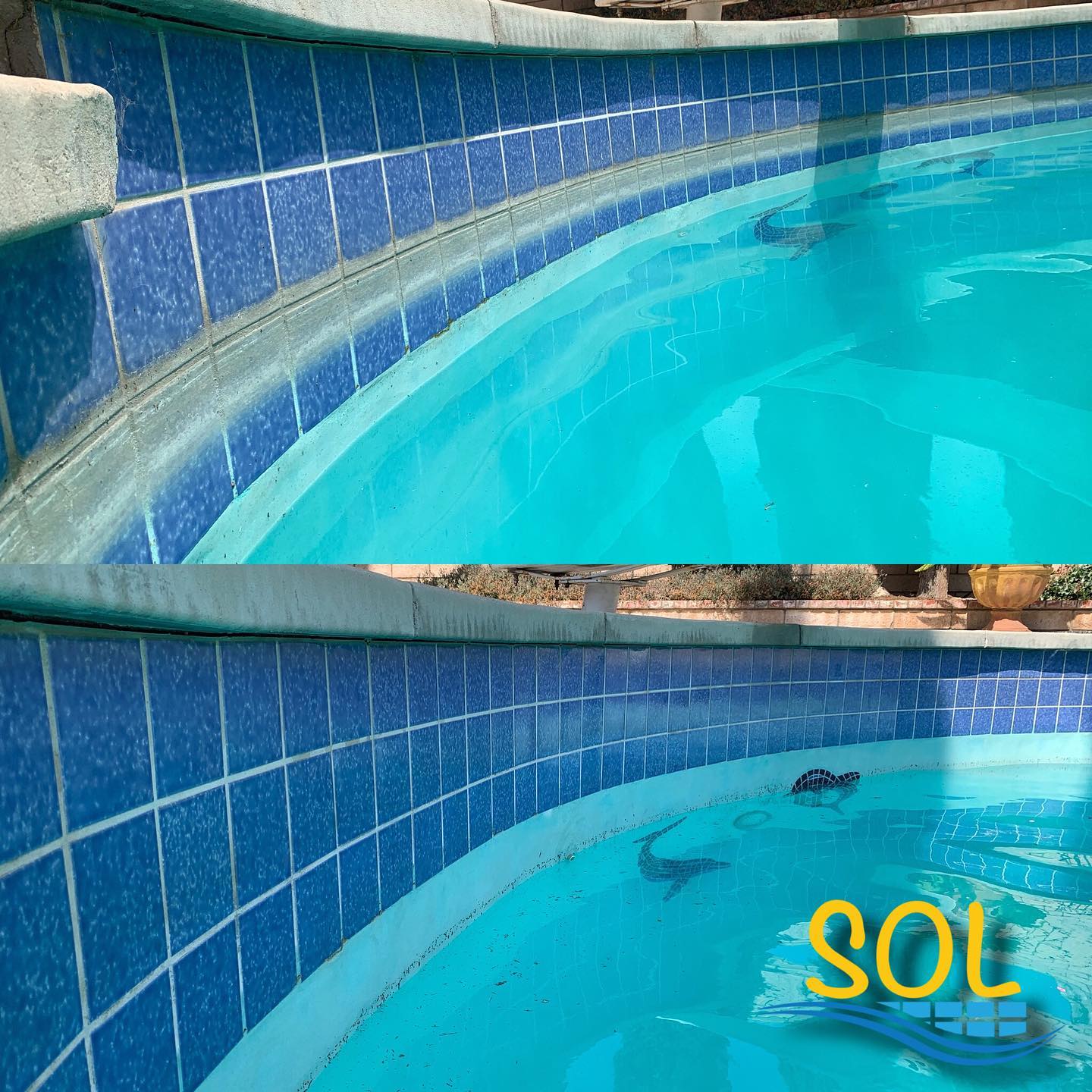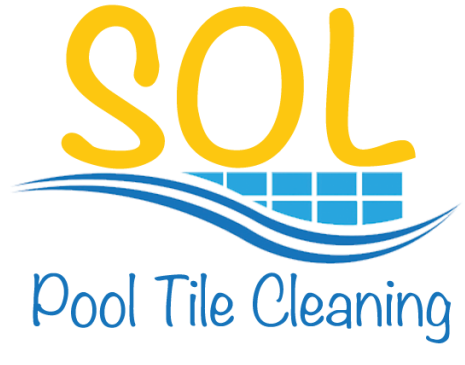Trust us for your pool cleaning needs.
Your swimming pool is the centerpiece of your Southern California backyard. But when white, chalky calcium buildup covers your pool waterline tiles, it can ruin the view. This guide explains how to clean pool tile and what you can do about tough stains.
Why Clean Pool Tiles? It's More Than Just Looks.
While aesthetics are a major driver, professional pool tile cleaning offers several crucial benefits for the health and longevity of your investment:
- Tile Longevity: Harsh mineral deposits are abrasive and can, over time, etch and permanently damage the glaze on your tile. This buildup also deteriorates grout, which can lead to tiles loosening or falling off. Regular cleaning prevents this degradation.
- Water Quality: Buildup on your tiles can flake off into the water, affecting your pool's chemical balance. This not only makes it harder to maintain clear water but also puts extra strain on your filtration system, potentially leading to costly repairs.
- Health & Hygiene: Porous calcium scale can become a breeding ground for algae and bacteria. This biofilm is often resistant to normal chlorine levels, impacting the overall cleanliness and safety of your recreational water.

The Sol difference: a dramatic transformation that restores beauty and value.
What Causes Calcium Buildup on Pool Tiles?
That stubborn white residue is a result of a few key factors common in Southern California:
- High Evaporation: Our sunny, dry climate causes pool water to evaporate quickly. As water evaporates, it leaves behind minerals like calcium, which then deposit on your tile line.
- Hard Water: Much of our local water supply is naturally "hard," meaning it has a high concentration of dissolved minerals, including calcium.
- Chemical Imbalance: Consistently high pH or alkalinity levels in your pool water can cause calcium carbonate to precipitate out of the water and stick to surfaces.
The Dangers of DIY Tile Cleaning
While a pumice stone or vinegar scrub might seem like a quick fix, these methods often do more harm than good. Pumice and other harsh abrasives can easily scratch and dull the finish of porcelain and glass tiles, causing irreversible damage. Furthermore, these methods are rarely effective against the tough, layered buildup common in our area.
Our Solution: Safe & Effective Professional Cleaning
At Sol Pool Tile Cleaning, we use a superior method: low-pressure media blasting. This state-of-the-art technique is the safest and most effective way to remove calcium deposits without harming your pool surfaces.
- Specialized Media: We use a water-soluble, pH-neutral mineral salt (like Kieserite). It's softer than your tile but harder than the calcium, allowing it to gently blast away the buildup without etching the tile underneath.
- Fast & Efficient: We can restore the shine to your pool's waterline in just a few hours, transforming the look of your entire backyard.
- No Draining Needed: Our process is clean and self-contained. The water-soluble media dissolves in the pool and is then safely circulated out by your existing filtration system.
How to Prevent Future Calcium Buildup
Once your tiles are professionally cleaned, you can take steps to slow the return of calcium scale:
- Maintain Water Chemistry: Regularly test and balance your pool's pH, alkalinity, and calcium hardness levels. Keeping these within the ideal range is your first line of defense.
- Use a Descaler: Add a weekly sequestering or chelating agent to your pool. These products bind to calcium in the water, keeping it suspended so it can't stick to your tiles.
- Reduce Evaporation: Using a solar cover not only conserves water and heat but also dramatically reduces the rate of evaporation, which is a primary cause of waterline buildup.

